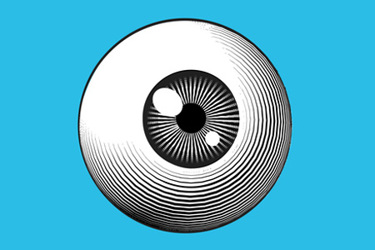The Rising Tide Of Ophthalmologic Gene Therapies

By Tyler Menichiello, Chief Editor, Bioprocess Online

It feels like every week I hear about another CGT company using science to develop miracles (for lack of a better word). While any successful gene therapy can fall into the “miracle” category, certain indications put into perspective just how powerful these therapies really are. To me, blindness is one of those indications. In recent years, there’s been an increase in gene therapy clinical trials for inherited retinal diseases (IRDs) — a group of genetic conditions that can lead to vision loss and blindness. Atsena Therapeutics is one of many companies in this growing segment of the industry, developing gene therapies to reverse blindness and vision loss in patients with IRDs.
Atsena’s lead candidate, ATSN-101, is being developed for patients with Leber congenital amaurosis type 1 (LCA1), a disease caused by mutations in the GUCY2D gene. The company’s other lead program, ATSN-201, is intended for patients with X-linked retinoschisis, a disease caused by mutations in the RS1 gene that lead to the separation of retinal layers and progressive vision loss. Both ATSN-101 and 201 are designed to deliver healthy, functioning copies of these respective genes to patients’ retinas to restore their vision and prevent further vision loss.

Breaking New Regulatory Ground
One of the biggest challenges Atsena faces is the lack of a well-established regulatory pathway for IRD gene therapies, Fujita explains. After all, Spark’s Luxturna is the only currently approved gene therapy for IRD. “Because there’s only been one program that’s gone through the entire registration process, and because each IRD is different and has different appropriate endpoints, developing a pathway to registration and approval is challenging,” he says. “We’re breaking new ground.”
While Atsena and other companies are very much pioneers in the ophthalmologic gene therapy space, they have the benefit of following Luxturna’s example. “Spark’s program targets LCA2, but the overall severity and type of vision impairment is similar to LCA1,” Fujita explains. “We’ve found that the endpoints they used for LCA2 are similarly effective for measuring clinical change in LCA1.”
“As a matter of fact,” he continues, “the endpoint that we’re most excited about — the multi-luminescence mobility test (MLMT) — which will most likely be the primary pivotal endpoint for our Phase 3 study, was developed by Spark and used as the primary endpoint for their approval.” The MLMT is a physical maze that patients must navigate at various light levels with each eye. “Patients are scored on their ability to navigate the maze at different light levels, so the score reflects the minimal amount of ambient light required for them to successfully navigate the maze.”
Fujita believes Atsena is well-positioned as a gene therapy company because of its exclusive focus on IRD. “Because we’re so focused, I think we’ve really been able to gather the expertise in our company of the best people in the field across everything from preclinical work to CMC manufacturing, clinical operations development, and regulatory affairs.”
Finding Clinical Sites
Another challenge Atsena faced developing ATSN-101 was finding clinical treatment sites to collaborate with. “It’s a relatively rare disease, so finding patients is always more challenging than clinical trials with prevalent diseases that affect millions of people,” Fujita says.
The company has a close partnership with two major sites — the University of Pennsylvania and Oregon Health Science University. Fujita says the main criteria for site selection was access to patients and the availability of a highly skilled surgeon capable of doing subretinal injections. “That’s not currently a skillset that every retinal surgeon has,” he tells me.
I ask if he’s at all worried that this lack of trained surgeons will pose a bottleneck once ATSN-101 (hopefully) gets approved. “We don’t think so,” he says confidently. “Spark has actually done a really good job of setting up a training system and a network of surgeons with experience administering Luxturna.” Given that ATSN-101 is a one-time administration that patients can travel for, Fujita doesn’t foresee any problems treating patients in need.
Why IRDs Are Good Gene Therapy Targets
Despite there only being one approved gene therapy for IRDs, the industry is seeing a boom of (promising) clinical activity in the space. “I think gene therapy in the eye has a lot of really special advantages,” Fujita tells me. These include a lower cost of goods and the fact that the eye is “anatomically and immunologically compartmentalized,” which makes precise delivery easier, according to Fujita.
It’s no secret that manufacturing gene therapies is expensive, but systemic gene therapies require more product for a single dose than ophthalmologic gene therapies do. “The eye is a small, enclosed compartment that requires only a fraction of the total number of vector genomes for successful treatment,” Fujita explains.
The second advantage is the immune privilege of the eye. “The eye is an immune privileged space,” Fujita says. “There’s a kind of barrier between the systemic immune system and the inside of the eye, and by limiting our treatment to just under the retina, we avoid a lot of that immune response that’s seen in other systemic therapies.”
Though the space is crowded, Fujita says, most companies are not directly competing for the same indications. “A win in any one indication is a win for the entire field,” he says. “A lot of the technologies and scientific breakthroughs that are coming with these wins are applicable across all gene therapies.”
